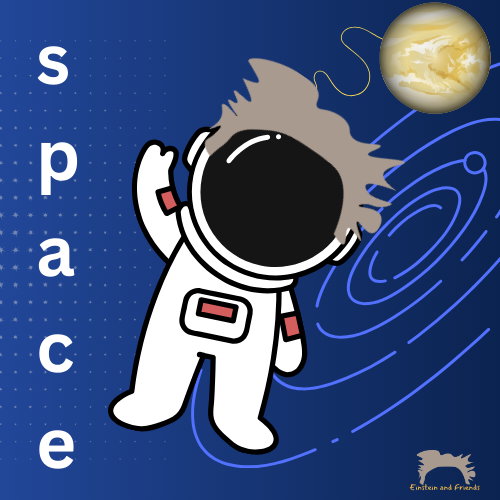NASA’s Latest Missions Explained for Children
- Einstein & Friends

- Oct 15
- 3 min read
Space is full of mysteries, and NASA—the space agency that sends rockets, robots, and astronauts into the sky—is always on a mission to learn more! Let’s take a look at some of NASA’s latest missions explained for kids in simple, exciting ways. Each one helps scientists understand our universe and make life better here on Earth.
🌞 1. The Parker Solar Probe – Touching the Sun!
NASA’s Parker Solar Probe is on a daring journey closer to the Sun than any spacecraft has ever gone.
Why it’s cool:
It studies how the Sun’s energy and particles travel through space.
It helps scientists learn how solar flares and storms affect Earth’s satellites, power, and even astronauts.
Fun fact: It’s flying so close to the Sun that it can withstand temperatures of nearly 2,500°F—hot enough to melt metal!

🪐 2. The Artemis Missions – Going Back to the Moon!
The Artemis program is NASA’s big plan to send astronauts back to the Moon—and this time, to stay!
What’s happening:
Artemis I was an uncrewed test flight around the Moon.
Artemis II will send astronauts on the same trip—without landing yet.
Artemis III will land the first woman and the next man on the Moon!
Fun fact: The astronauts will live in a lunar base and practice for future Mars missions.
3. The James Webb Space Telescope – Looking Back in Time
The James Webb Space Telescope (JWST) is like a giant golden mirror floating in space, looking deeper into the universe than ever before.
Why it’s amazing:
It can see light from stars and galaxies formed billions of years ago.
It helps scientists study planets around other stars to see if they might have life!
Fun fact: JWST’s mirrors are coated in real gold to reflect faint light from faraway galaxies.
🌕 4. VIPER Rover – Searching for Water on the Moon
NASA’s VIPER rover is a robot that will drive across the Moon’s South Pole looking for frozen water.
Why it matters:
Water could help astronauts make fuel and stay hydrated during long missions.
It will map icy spots that could one day support a Moon base.
Fun fact: VIPER’s name stands for Volatiles Investigating Polar Exploration Rover—a mouthful, but it means it’s great at sniffing out hidden ice!

🔴 5. Mars Sample Return – Bringing Mars Rocks Home
NASA and the European Space Agency are working together to bring pieces of Mars back to Earth.
How it works:
A rover called Perseverance is collecting tiny rock samples right now.
Future spacecraft will pick them up and launch them back to Earth.
Fun fact: When those rocks arrive, scientists will study them for signs of ancient life!
🌌 What Kids Can Learn from NASA’s Missions
NASA’s latest missions show how science, teamwork, and creativity can take humans farther than ever before. Kids who love to ask questions, explore, and experiment are already thinking like young scientists and engineers!
So next time you look at the night sky, remember—there are robots on Mars, probes near the Sun, and telescopes watching galaxies that are billions of years old.
⚠️ Parent Supervision Disclaimer
All experiments, space crafts, or related activities inspired by this post should always be explored safely and age-appropriately. Adult supervision and guidance are encouraged when children explore space-related experiments or online content. Einstein & Friends is not responsible for any misuse of the information shared.
🌠 Ready to Learn More?
Keep exploring the universe with our fun STEM books and experiments!📘 Einstein’s Fun Science Adventures: 20 Experiments for Young Scientists includes exciting projects that explain space, gravity, and motion in ways kids can try at home.



Comments